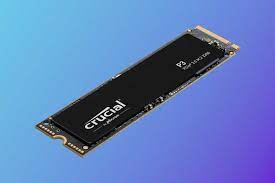
Solid-state drives (SSDs) are fast, reliable, and energy-efficient storage devices that improve the performance and speed of your computer. However, like any hardware component, it can encounter problems and how to check for errors on SSD that can affect its performance and lifespan.
In this article, you will learn how to fix the most common SSD problems and errors, such as slow performance, bad sectors, and crashes. By following these simple steps, you can diagnose and fix SSD problems and optimize your storage device for better performance and longevity.
Today, solid state drives are becoming increasingly important. Although many computers still use hard drives for data storage, it is not uncommon for computers to use two hard drives: an SSD as the primary drive and an HDD as the secondary drive.
SSD prices used to be very high. However, prices have been falling for some time now as more advanced devices come on sale. Although SSD offer users increased performance and a number of other benefits, these drives are very vulnerable. Therefore, they are prone to making mistakes at any time.
Checking an SSD for errors is not as easy as checking a regular HDD drive. Standard tools will not work because SSDs are designed differently, so you need to use tools specifically designed for SSDs.
Today we will teach you how to check your SSD for errors and how to check its status.
What is the Method to Check for Errors on My SSD?
In this section, we will mention some of the best solutions that you can use to check your SSD for errors if you think something strange is going on or want to perform maintenance on your drive.
Check for Disk Errors During Windows Security and Maintenance
Open the Control Panel, click the Security and Maintenance icon, expand Maintenance and view the disk status.
- As shown in the image below, all drives are working fine. If an error is detected, the information will change, and an option will appear asking you to scan the disk.
Check the Disk for Errors in Windows Properties
- Open this PC in File Manager, right-click on the SSD you want to scan, and select Properties.
- On the Tools tab, click the Test button in the Debugging section.
- After that, you can choose to scan the disk (if necessary) or repair the disk (if an error occurs).
- Once the scan is complete, click the Show Details link to view the Chkdsk log in the event log.
Method 2: Check SSD Errors using CHKDSK
You can easily find bad sectors and file system errors on your SSD by running CHKDSD (short for Check Disk) in Windows. This command reports the number of bad sectors after checking the SSD. Don’t forget to run CHKDSD regularly. However, if you need more information about SSDs, read Method 1.
- Run CHKDSK to check the SSD for errors:
- Type cmd in the Windows search box and select “Run Command Prompt as Administrator.”
- Type chkdsk C: /f /r /x in the command window.
- You can use the chkdsk command [chkdsk C: /f /r /x] to check and scan the SSD for errors and repair file system corruption and bad sectors if errors are found.
Method 3: Check the SSD for Errors via Windows Properties
Apart from the above methods, you can also use Windows properties to check SSD errors. The specific procedures are as follows:
- Click “This PC” in File Manager, right-click the SSD you want to check, and select “Properties“.
- Select Partition Tools > Diagnostic Options from the Fault Diagnosis section.
- After this, you can choose to scan the target drive or repair the drive if errors are found.
- Once the scan is complete, click the Show Details link to view the CHKDSK log in the event log.
Use third-party Party Software to Check for Errors on SSD Easily
Sometimes these tools are not enough to solve the SysTools Solid State Drive Recovery Tool problems faced by the SSD. But there is no reason, which is why there are so many plans. Now you know how to check SSD in Windows without using external programs, but you can use third-party tools for this purpose.
Note: If you want to lose your files from GPT or MBR partition, then click Best Partition Recovery Software on this page.
Conclusion
This article suggests three effective methods to help you check your SSD for errors, but then note that if your SSD has suffered serious physical damage, you will need to follow these methods and repair it or there is no need to send it in time for a replacement. To avoid making excuses. Loss leads to more loss.
Also read: Can Data on a Failed SSD Be Recovered?